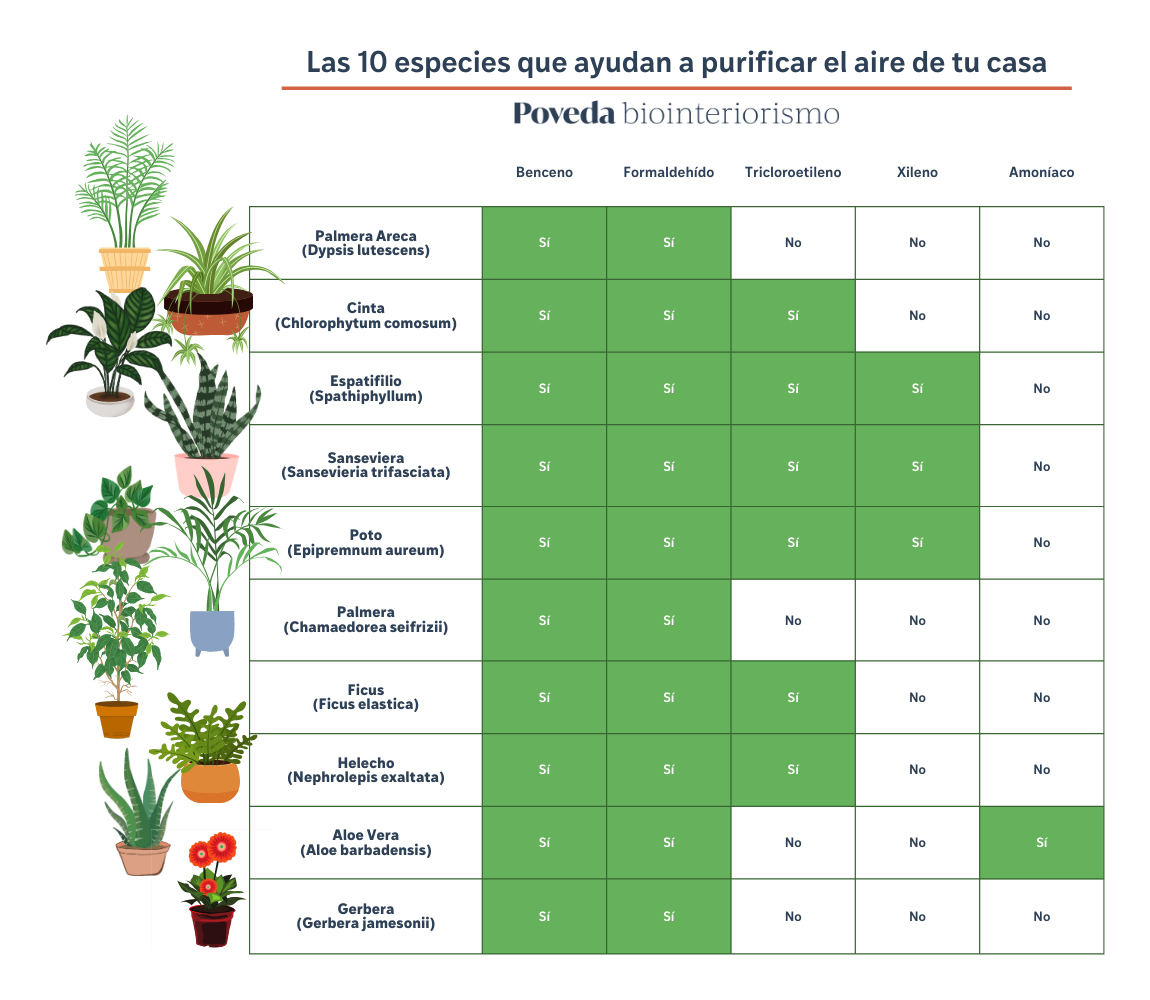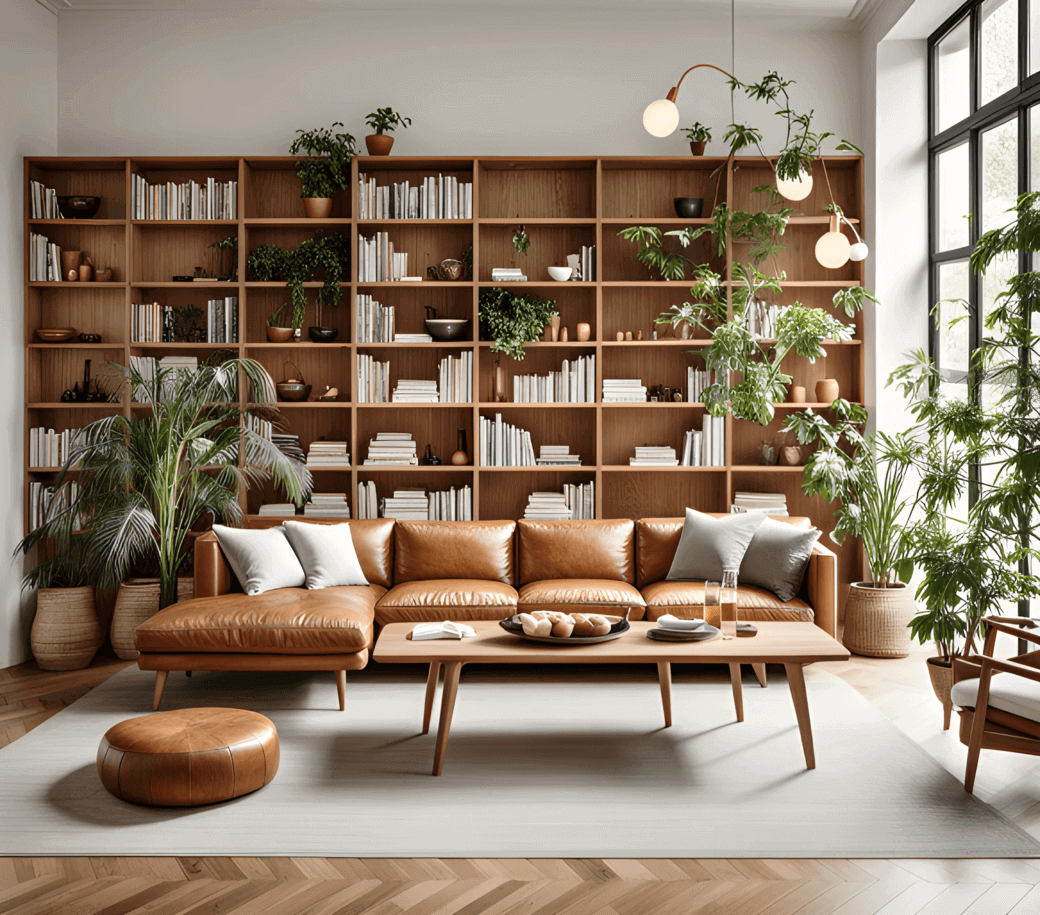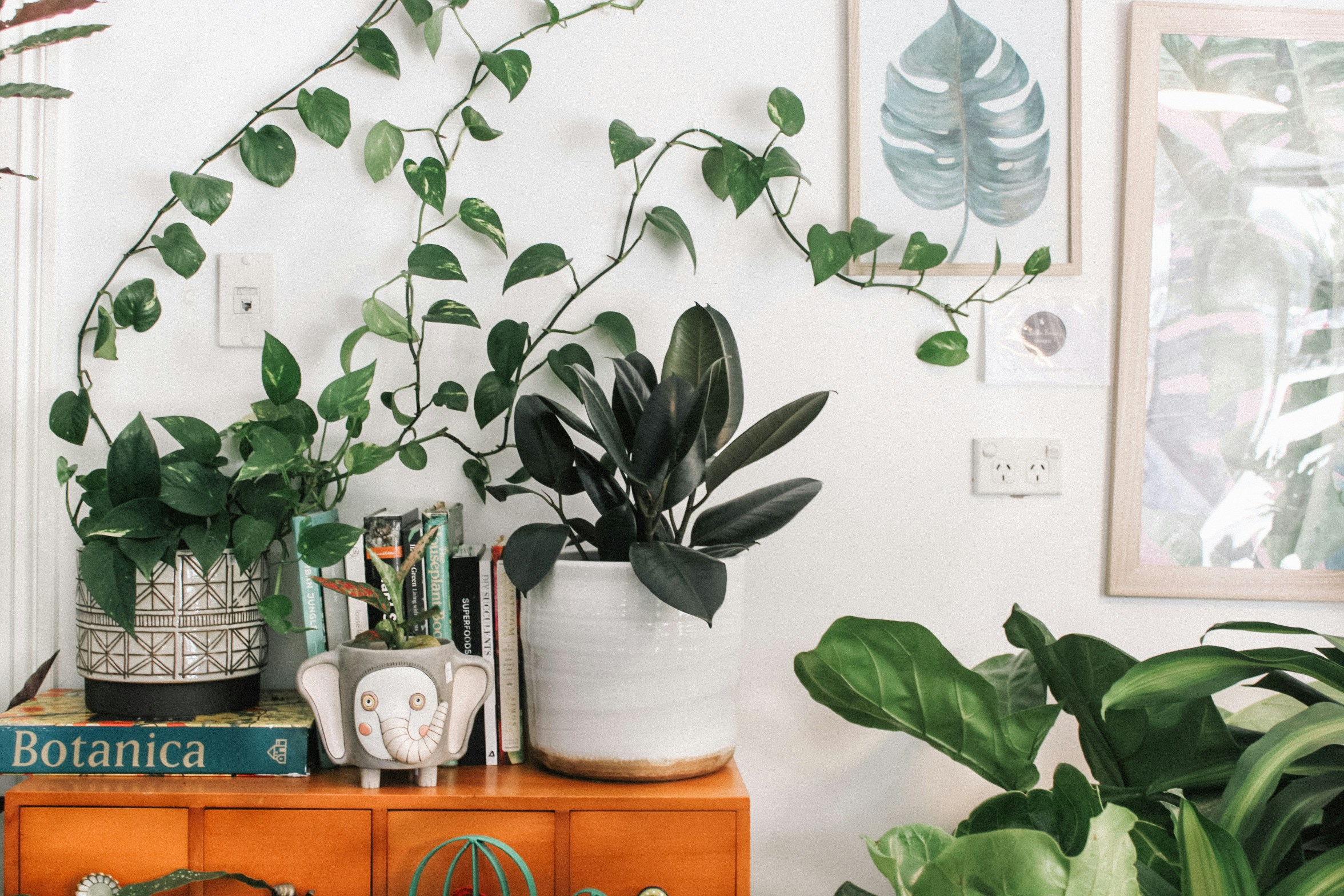Did you know that having indoor plants not only adds a green and fresh touch to your decor, but can also improve your well-being? In this article, we will find out which types of plants are ideal for purifying the air and increasing the quality of the indoor environment. We'll also give you some practical tips on how to properly care for your plants and protect them naturally, so get ready to fill your home with green life and help you achieve better health!
Health benefits of having plants in the home
If you're looking for an easy, natural way to improve the health of your home, look no further than houseplants! These green living things not only add beauty, but can also offer you incredible health benefits.
Did you know that with only 3 plants you can purify the air in a 10m² space?
Plants are adept at absorbing carbon dioxide and releasing oxygen during the process of photosynthesis. This means that having these living things at home allows you to breathe healthier, cleaner air. But the health benefits don't stop there. Research has shown that having these living things in your home can help reduce stress, improve mood and even increase productivity. By interacting with plants, either by watering them or simply admiring them, you can feel a calming and relaxing sensation.
In addition, some studies suggest that they can help purify our minds by improving concentration and reducing symptoms of ADHD (Attention Deficit Hyperactivity Disorder). Simply surrounding yourself with their green presence can have positive effects on your mental well-being. Having houseplants in your home is much more than just decoration; it is an investment in your own physical and emotional health.
Types of houseplants that purify the air and increase the quality of the environment
When we think of houseplants, we may picture pretty pots and vibrant green leaves. But as I've mentioned before, there's so much more to having plants in the house:
- Absorb the carbon dioxide we generate
- Oxygenate the indoor environment.
- They regulate the relative humidity of the room.
- They help regulate room temperature.
- They clean the air.
According to the study "Clean Air" led by NASA in 1989, researchers discovered that each plant is specialized in absorbing certain compounds. From this study, where you can consult here The first list of plants capable of cleaning the air, I summarize below the 10 species that help purify the air in your home. Each one specializes in absorbing certain substances that are commonly found in our homes. Among these substances, the five most common are: trichloroethylene, formaldehyde, benzene, xylene and ammonia.

These are just a few fascinating examples of the many varieties available. By incorporating these air-purifying plants into your home, you'll not only be adding a decorative touch, you'll also have living things that help you connect with nature.
How to care for houseplants properly
Caring for our houseplants involves not only watering them regularly, but also providing them with the right environment and care so they can grow healthily. Here are some helpful tips to keep your plants happy in your home.

First of all, it is important to ensure that the pots have good drainage to prevent water from accumulating and causing damage to the roots. In addition, it is essential to use quality soil specific to each type of plant.
Watering is another key aspect to consider. Each species has different water needs, so research how much water your particular plant needs. Avoid overwatering or letting them dry out completely, as both extremes can be detrimental. Nowadays there are mobile applications that can help you to know these needs of each plant and alert you of the weekly/biweekly waterings for each one.
In addition to water, plants also need sunlight for photosynthesis. Place them near a window where they receive indirect light for at least a few hours a day. If you have rooms with little natural light, you can ask your nursery which species can better withstand a few hours of light.
Don't forget to fertilize your plants periodically to provide them with the necessary nutrients. Use organic fertilizers and always follow the manufacturer's instructions.
Finally, although houseplants tend to have few pests, be especially vigilant in spring/summer with ventilation or when acquiring new specimens to control possible infestations of mites or aphids. Regularly examine your plants for signs such as browning leaves or strange spots and take preventive measures if necessary.
Natural tricks to protect your plants
I share with you here some little tricks and natural care to keep your plants happy and enjoy them and their benefits for a long time.
- To keep your plants well nourished you can grate the avocado pit with a grater and incorporate small piles of this seed under the soil of each pot. You can make a small hole in the soil and incorporate it there. Then you will have to cover it so that it does not oxidize quickly. Repeat this process from time to time and you will see how your plants are always well nourished.
- To deal with fungi such as powdery mildew or downy mildew, you can prepare a dilution of filtered water with 5% whey from yogurt or milk (ratio of 95ml of water to 5ml of whey).
- For aphids, I propose two options:
- A) you can use a dilution of potassium soap in filtered water (10gr of soap in 1L of water).
- B) three cloves of garlic crushed in 1L of water; add the dilution to a spray bottle and spray the affected area.
To conclude, I would like to comment that these green living beings that we can have in our home can provide so many benefits with so little care that I invite you to incorporate them into your home without any reluctance. If in addition to all these aspects that I have mentioned, you have any questions, I invite you to write me and I will be happy to help you.
And if you are motivated by other topics related to the environment of your home, I leave you here the link to the article about the secrets of ecological paints and this one about bio tricks to renovate your home Enjoy!




